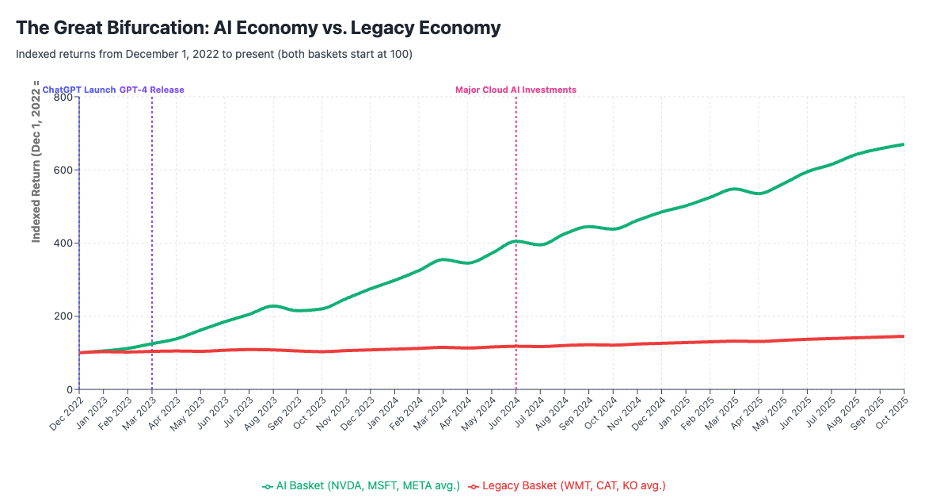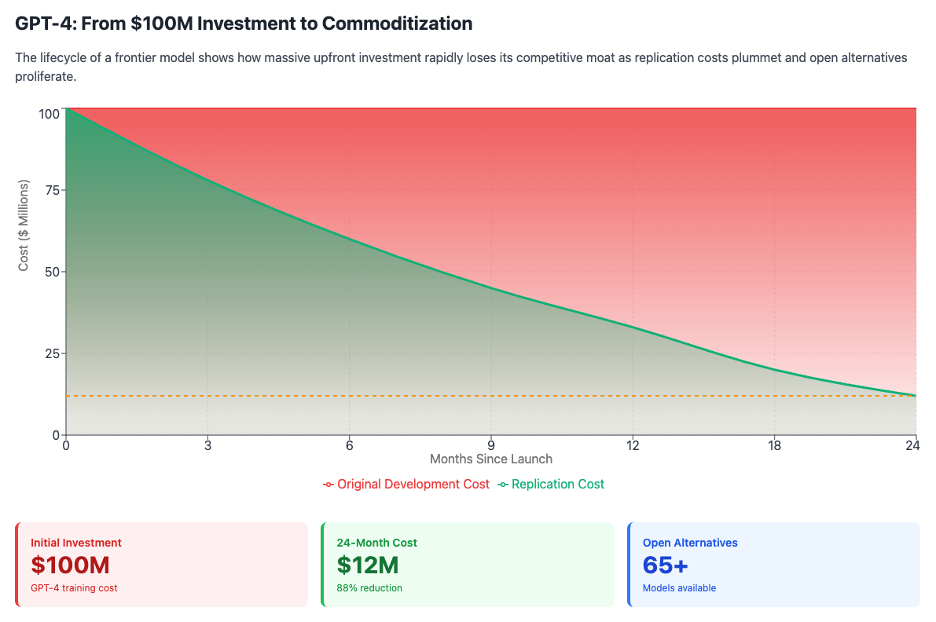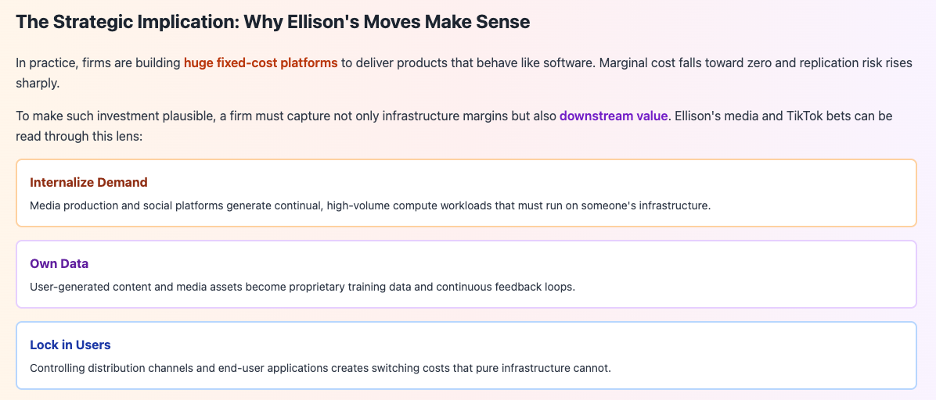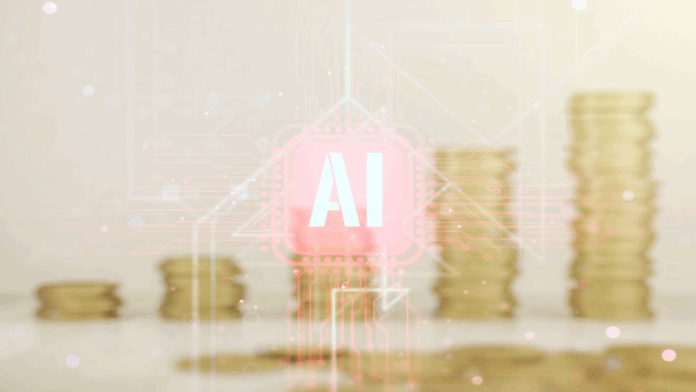Oracle’s media investments illustrate how AI leaders are vertically integrating to control both compute supply and demand
Imagine this: Oracle’s Larry Ellison invests in Paramount Pictures and courts TikTok. At first glance, it looks like a billionaire hobby. Once aligned with Oracle’s multibillion-dollar AI infrastructure ambitions, however, the strategy looks like a deliberate attempt to generate demand vertically.
Oracle is building massive AI data centers with budgets rumored to exceed $100 billion.
Media production and social platforms such as TikTok are compute-hungry and data-rich. They generate continual, high-volume workloads.
Ellison is therefore not just buying content. He is engineering demand for his own infrastructure.
By controlling both the supply of compute and the demand for it, Ellison aims to create a self-reinforcing system that shields him from the commodity trap that plagues pure infrastructure providers. This logic represents the spearpoint of how the AI economy is diverging from the environment most firms inhabit.
From this perspective, we can see why capital markets are behaving so strangely and why many investments may look much less profitable in reality than they do on paper.
Two diverging economies
The AI economy vs. the legacy economy
Does it feel like every business headline now features billions? Data centers, chip fabs, model training runs, energy plants flood the literature. Suddenly $10 billion sounds small, and $100 billion is the new serious.This is not the world that most businesses inhabit.
We are watching two economies diverge:
- The AI Economy: Defined by capital expenditures at a scale that used to belong only to governments. The numbers are tens to hundreds of billions. Firms like Nvidia, Microsoft, Meta, and Oracle are repriced not by their cash flows today, but by their potential to sit at the center of a transformed production function. Their stock prices reflect belief that every unit of capital deployed into AI will deliver more output than the old economy ever could.
- The Traditional Economy: Manufacturing, retail, services, and even mature tech. These companies face compressed valuations, tight capital constraints, and private equity scrutiny over every dollar. They aren’t just cyclical laggards. They’re being repriced as their future productivity is discounted against the possibility of AI disruption.
From December 2022 onward, the performance gap has grown steadily wider. An “AI basket” of Nvidia, Microsoft, and Meta surged nearly sevenfold from its base, while a “Legacy basket” of Walmart, Caterpillar, and Coca-Cola barely moved above its starting point.
In contrast, the legacy names show a flat line. Their returns have been stable, modest, and largely disconnected from AI hype cycles. This quiet trajectory reflects their role in mature industries that remain insulated from AI-driven revaluations.

The result is a bifurcation in markets: two economies moving on different curves. The AI economy commands premium multiples and capital inflows, while the legacy economy continues to deliver steady but unspectacular growth.
Building oil refineries to sell MP3s
Why would anyone commit $50 billion or $100 billion to AI infrastructure when the output (models and inference) is rapidly commoditized? This is the paradox at the core of the AI economy.
Massive fixed costs include data centers, GPUs, energy, cooling, networking, model training, dataset acquisition, and software engineering.
Rapid diffusion and near-zero marginal cost then follow. Once a model architecture is published, others replicate it. Open-source releases accelerate cloning and fine-tuning. Competing models become cheaper to train as infrastructure improves.

In practice, firms are building huge fixed-cost platforms to deliver products that behave like software. Marginal cost falls toward zero and replication risk rises sharply.
To make such investment plausible, a firm must capture not only infrastructure margins but also downstream value. Ellison’s media and TikTok bets can be read through this lens. He is trying to internalize demand, own data, and lock in users to his stack.
Scenarios: What happens next
The AI economy is still young, and its trajectory is far from settled. What looks like explosive growth today could harden into stable utility-like returns, collapse into commodity pricing, or evolve into something entirely new. The table below outlines five possible paths forward, each with a different mechanism, example, and set of return implications. Together, they capture the strategic uncertainty that investors and executives must navigate as they place bets in this rapidly shifting landscape.
| Scenario | Mechanism | Example or Hypothetical | Return Implication |
| 1. Oligopoly and utility returns | Only a few players survive, scale protects them | A handful of firms control AI compute globally, similar to cloud providers | Returns stabilize in the range of 8 to 12 percent real ROI. Profitable but not spectacular. |
| 2. Full commoditization | Core models become open-source and standardized. Margins collapse. | Model providers compete on cost, value shifts to applications | Infrastructure returns decline sharply. Most investors lose capital. |
| 3. Regulatory lock-in | Intellectual property, licensing, and safety rules raise barriers to entry | Governments mandate audits or restrict model distribution | Select firms earn outsized returns under protection, but risk remains high. |
| 4. Vertical integration wins | Firms combine supply, data, and demand in one stack | Ellison’s Oracle to Paramount to TikTok strategy succeeds | Returns come less from model edges and more from ecosystem control. |
| 5. Paradigm shift reset | New architectures (quantum, neuromorphic, biological) displace today’s models | Markets reset every decade, wiping out prior leaders | High churn, destruction of capital, and occasional speculative winners. |
Illustrative example (Scenario 4): Suppose Oracle’s media and TikTok moves let it amortize $50 billion of infrastructure cost by charging “internal compute” usage to its media division while also selling surplus capacity externally. Even if external margins decline, the internal load is locked and margin shift is possible.
Under hybrid scenarios, the most resilient firms will be those that not only build faster models but also own data, lock in users, and capture consumption directly.
Actionable playbook for executives and investors
For AI and infrastructure aspirants
- Design your own demand. Build or acquire businesses whose workloads your infrastructure will serve. Ellison did not just build data centers. He bought content and distribution to feed them.
- Embed downstream value capture. Do not only rent compute. Take a cut of business outcomes such as margin share in applications your compute enables.
- Time matters, and so does defense. You may have only 12 to 24 months of premium margin before competition catches up. Plan your barriers early, especially in data, user experience, and workflows.
- Hedge innovation risk. Allocate reserve capital for radical shifts such as quantum that could obsolete your current architecture.
For traditional (legacy economy) firms
- Do not dismiss AI as irrelevant. Your valuation may already be discounting structural obsolescence. Face it consciously rather than waiting for capital to “normalize.”
- Partner or embed instead of competing directly. Use AI platforms as leverage. Do not attempt to win infrastructure races. Aim to become the best AI-powered version of your business.
- Find domain moats. In your industry, identify data or workflow exclusivities that generalized AI cannot easily replicate (for example healthcare outcomes or supply chain idiosyncrasies).
- Accelerate pilot to scale cycles. The window of differentiation is shrinking. Pilots that last 18 months will already be obsolete. Use modular and rapid iterations.
Why Ellison’s moves matter
Ellison’s Oracle plus Paramount plus TikTok strategy is a microcosm of the logic that will define winners in the AI age. These combinations internalize demand, produce data, lock in workloads, and blur the line between supply and demand.

If successful, such firms will be less vulnerable to margin collapse from commoditization because they are not just compute vendors. They are full-stack ecosystems.
If markets reward this strategy, Ellison’s unusual media bets may look like foresight. If not, they may appear as extravagant diversions. Either way, watching whether he can sustain that vertical system provides a live case study in how radical capital is being reallocated in real time.

